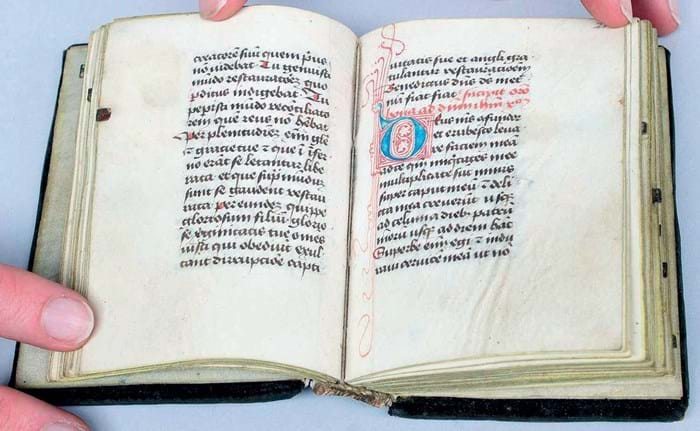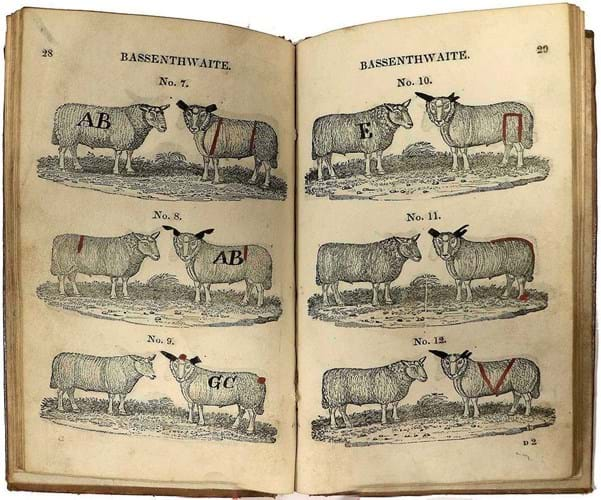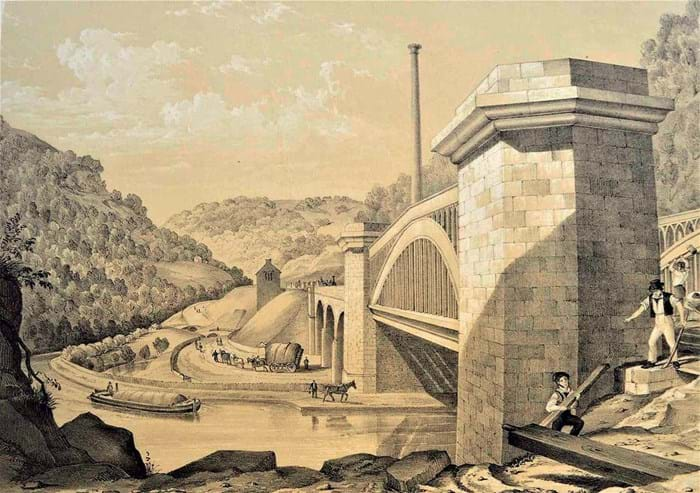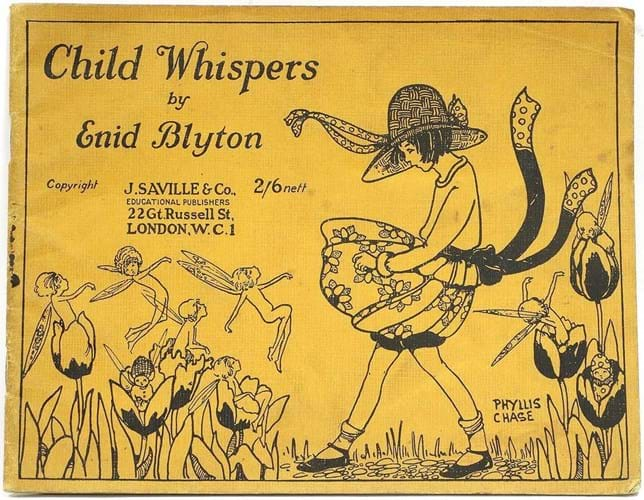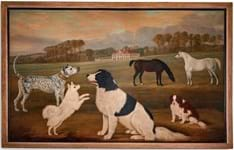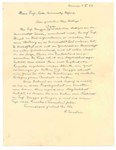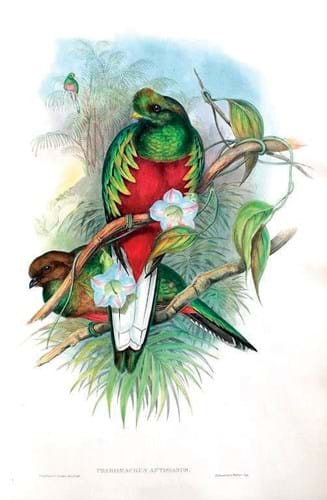
The crested quetzal (Pharomacrus antisianus), a plate from John Gould’s second edition of A Monograph of the Trogonidae, £15,000 at Tennants.
The second edition of John Gould’s A Monograph of the Trogonidae, or Family of Trogons was close to a new edition.
The first version of this work (Gould’s second monograph) was issued in three parts between 1835-38 and illustrated 34 species across 36 plates.
Lots of fresh research went into the second edition that was published in four parts over 17 years until 1875. A dozen new species of these colourful tropical birds were added, the text was re-written and new plates added to bring the number of large folio hand-coloured lithographs to 47. Gould writes in his introduction that “in reality [this is] a new publication, the plates having been redrawn, and many new species figured for the first time”.
There was a time when a good copy of this work might bring something in the region of £25,000- 30,000 but the market for natural history plate books is a lot softer these days.
The example bound in half morocco gilt in the Books, Maps and Manuscripts sale at Tennants (24% buyer’s premium) on September 29 was guided at £15,000-20,000 and got away at the low estimate.
The Leyburn sale (115 lots with a 95% selling rate) covered most aspects of book collecting from a volume of works by Dutch humanist Desiderius Erasmus (1466-1536) to books with a distinct north of England focus.
A diminutive, illuminated prayer book in Latin script, thought to have been made in the 14th or 15th century in the Low Countries, sold for £5000 (estimate £2000- 3000). Measuring just 4in (10cm) high, this pocket-sized book for personal devotions was once in the ‘Valuable and Extensive Library’ of George Dunn of Woolley Hall, near Maidenhead which was dispersed in three auctions at Sotheby’s between 1913-15.
Influential works
The Erasmus volume comprised five essays and treatises published in Antwerp and Rotterdam between 1522-25 during the early Reformation including two of his most influential works: Enchiridion Militis Christiani or Handbook of the Christian Knight (1523), an appeal for Christians to act in accordance with the Christian faith rather than merely performing the necessary rites and Exomologesis or The Manner of Confessing (1524), in which Erasmus articulated his views on the true manner of Christian confession.
The quintet was bound together in a well-worn but early blind-stamped leather binding that used vellum pages from an earlier manuscript work as free endpapers. Guided at £500-800, it sold at £7500.
Quaker notes
Also of note is a small family collection of handwritten books with Quaker interest. The earliest of the three volumes was titled a Private Calendar and covered diary entries from January 1795 to September 1802 authored by Stephen Wilson, a silk manufacturer who recorded his life around Hackney and Bethnal Green.
The second volume titled In the Days of Old. A Quaker Child, by Granny, was written and illustrated by Isabella Tylor (née Harris) for her grandchildren. The text details her childhood in a ‘village near London’ (the leafy rural settlement of Stoke Newington) and later moves to Mayfield in Sussex and Kensington where the book was written in 1893.
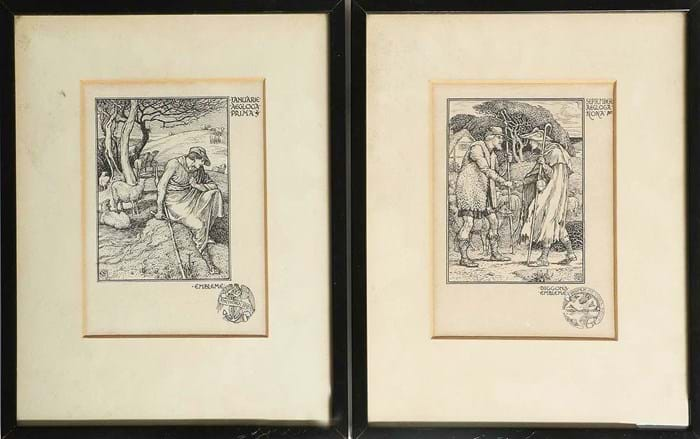
Two original pen and ink illustrations from The Shepheard’s Calender by Walter Crane, £1200 at Tennants.
Two original pen and ink illustrations by Walter Crane sold at £1200. Denoting the months of January and September, these were produced for a version of the Elizabethan poem The Shepheard’s Calender published in the US by Harper & Brothers in 1898. Both were in frames carrying the label of Graves Gallery of Cherry Street, Birmingham.
The Shepherd’s Guide; or A Delineation of the Wool and Ear Marks on the Different Stock of Sheep was the title of a series of books first published in the early 19th century to help identify stray herds in Cumberland, Westmorland and Lancashire.
The earliest books printed in Penrith and sold by subscription to local farmers, depict pages of engravings of sheep and their markings together with the names and addresses of their owners.
The example here, published by James Brown in Penrith, was dated 1827 (the earliest known was printed by John Walker in 1817), and covered farmsteads around Bowscale, Mungrisdale, Threlkeld, Skiddaw, Bassenthwaite, Uldale and Caldbeck. A rare survivor, it took £700 (estimate £300-500).
Tait tracked
Views on the Manchester & Leeds Railway, combining engravings by Liverpool-born artist Arthur Fitzwilliam Tait and descriptive history by Edwin Butterworth, is among the best accounts of Victorian railway building.
Published by Bradshaw and Blacklock in 1845 it features 19 tinted lithograph plates documenting the progress of the line that opened in stages, from Manchester to Normanton, between July 1839 and March 1841.
George Stephenson oversaw the project, although Thomas Gooch was the principal engineer on site. Tait’s views do not have the artistry of John Cooke Bourne’s better-known lithographs of the Great Western Railway but are considered a more realistic record of the challenges of railway construction and show the line in its urban and rural settings.
The copy here, in original cloth gilt, took £450 (estimate £300-500).
This proved to be Tait’s main UK work - he emigrated to the US in 1850 where he achieved success with the New York printmakers Currier & Ives.
Seven c.1846 watercolours for an unpublished work by Tait, Views on the London and North Western Railway, made £5600 at Dominic Winter in July 2021.
Sold at £480 in Tennants’ auction was a first edition copy of the first published work by Enid Blyton. Child Whispers, a collection of 28 poems, was illustrated across its 24 pages by the author’s childhood friend Phyllis Chase. This copy, in its original yellow covers (the staples rusted as usual) has the price tag of 2s 6d.


